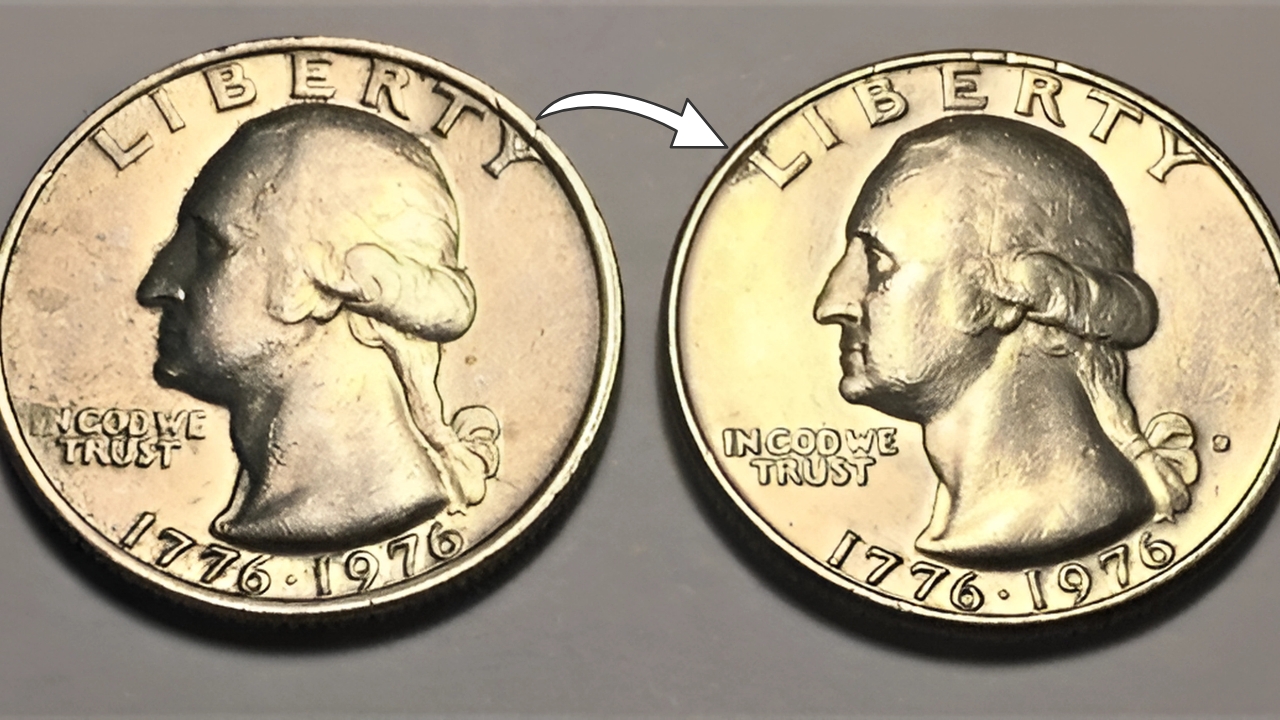The United States Bicentennial quarter, minted in 1975 and 1976, stands as a remarkable testament to American numismatic history.
Created to commemorate the nation’s 200th anniversary of independence, these distinctive quarters have captured the interest of collectors and history enthusiasts alike. This comprehensive examination explores their historical significance, varieties, and current market values.
Historical Context and Design Elements
The Bicentennial quarter represents a unique departure from traditional U.S. coinage design. The reverse features a Colonial drummer facing left, accompanied by a victory torch encircled by thirteen stars, symbolizing the original colonies.
This design, created by Jack L. Ahr, replaced the traditional eagle reverse for the commemorative period. The obverse retained John Flanagan’s familiar Washington portrait but incorporated the dual date “1776-1976.”
The United States Mint began producing these special quarters in 1975, continuing through 1976. Their production encompassed both Philadelphia and Denver facilities, with some special collector versions struck at the San Francisco Mint. The dual dating on these coins makes them instantly recognizable and historically significant.
Regular Strike Values and Variations
Standard circulation Bicentennial quarters, while commemorative in nature, were produced in substantial quantities. The Philadelphia Mint, producing coins without a mint mark, struck over 800 million pieces.
The Denver Mint, whose coins bear the “D” mint mark, contributed an additional 860 million examples. These high production numbers ensured widespread circulation and accessibility.
Today, circulated examples typically command modest premiums over face value, generally ranging from $1 to $5, depending on condition.
However, uncirculated specimens, particularly those exhibiting pristine surfaces and strong strike characteristics, can achieve significantly higher values, often reaching $10 to $25 for superior examples.
Silver Composition Varieties
The San Francisco Mint produced special silver-clad versions specifically for collectors. These quarters, containing 40% silver, were never intended for circulation and feature the “S” mint mark. They were available in both proof and uncirculated finishes through special mint sets and proof sets.
Silver Bicentennial quarters have experienced consistent demand from collectors, with current values ranging from $5 to $15 for uncirculated specimens and $15 to $30 for proof examples in original mint packaging.
The silver content provides an intrinsic value foundation, while the commemorative status and collecting appeal add numismatic premium.
Exceptional Specimens and Varieties
Certain Bicentennial quarters command extraordinary premiums due to their exceptional preservation or distinctive characteristics. Specimens grading MS-67 or higher on the Sheldon scale can achieve prices exceeding $100, with some spectacular examples reaching several hundred dollars at auction.
Notable varieties include doubled die examples, which show distinct doubling in certain design elements. These varieties, while scarce, add significant interest for specialized collectors. Authentication by recognized grading services becomes crucial for these premium specimens, as their values can justify the certification expense.
Error Coins and Their Appeal
Various minting errors occurred during the extensive production of Bicentennial quarters. Notable errors include off-center strikes, wrong planchet strikes, and doubled dies. These error coins generate particular interest among specialized collectors, with values varying significantly based on the error type and severity.
Dramatic errors, such as major off-center strikes or wrong planchet errors, can command prices ranging from several hundred to several thousand dollars. However, more subtle varieties typically achieve more modest premiums, often in the $25 to $100 range, depending on the specific characteristic and condition.
Preservation and Condition Impact
The condition of Bicentennial quarters significantly influences their market value. Circulated examples showing minimal wear maintain modest premiums, while uncirculated pieces with original mint luster command stronger prices. The presence of contact marks, scratches, or environmental damage can substantially impact value.
Professional grading services provide standardized assessments that help establish market values. Coins in original mint sets often retain superior preservation, making them particularly desirable to collectors seeking high-grade examples.
Collection and Investment Considerations
While most Bicentennial quarters do not represent significant financial investments, they offer accessible collecting opportunities with potential for appreciation. Complete collections might include examples from each mint, both regular strikes and silver versions, along with major varieties and exceptional grade specimens.
Building a specialized collection requires understanding grade differences, variety attributions, and market values. Authentication becomes particularly important for higher-value specimens, as the market has seen unauthorized reproductions and altered dates.
Historical Significance and Educational Value
Beyond monetary considerations, Bicentennial quarters serve as tangible connections to American history. Their widespread circulation exposed millions of Americans to commemorative coinage, while their distinctive design celebrated the nation’s bicentennial in daily commerce.
These quarters continue to provide educational opportunities, introducing new generations to numismatics and American history. Their accessibility makes them ideal teaching tools for discussing both historical events and coin collecting basics.
Market Trends and Future Outlook
The market for Bicentennial quarters has remained relatively stable, with modest appreciation for exceptional specimens. The abundance of circulated examples ensures continued accessibility for new collectors, while rarer varieties and high-grade specimens maintain stronger demand among advanced collectors.
Future value appreciation likely depends on continued collector interest and the discovery of new varieties. The historical significance and broad appeal suggest ongoing collector demand, particularly for superior examples and significant varieties.
Conservation and Maintenance
Proper storage and handling remain crucial for preserving Bicentennial quarter value. Coin holders, albums, and environmental protection help prevent damage and deterioration. Avoiding cleaning or other invasive preservation attempts helps maintain original surfaces and potential value.
Professional conservation advice suggests storing coins in appropriate holders, maintaining stable environmental conditions, and handling specimens by their edges to preserve surface quality.
Bicentennial Quarter Coins Worth
The Bicentennial quarter series represents an important chapter in American numismatic history, combining historical significance with collecting appeal.
While most examples maintain modest values, certain specimens command significant premiums based on condition, composition, or variety status. Understanding these factors helps collectors make informed decisions while appreciating these tangible connections to America’s bicentennial celebration.
